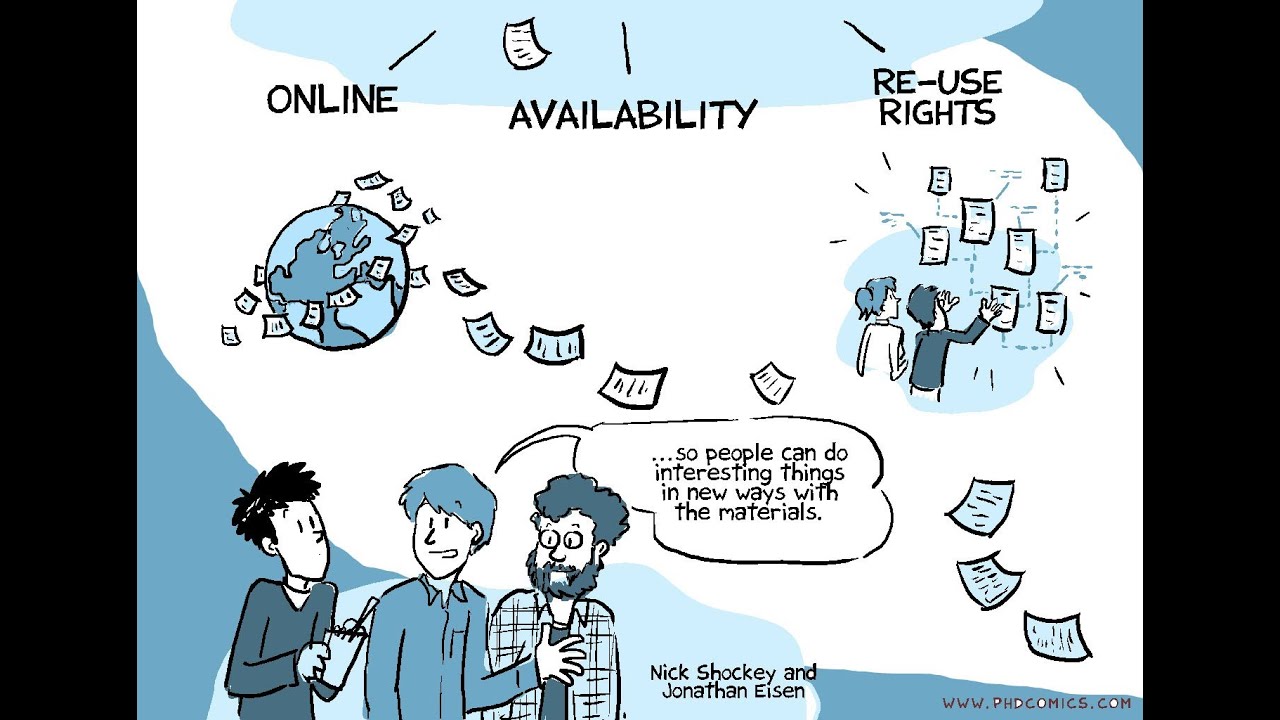Types Of Open Access Resources
Different online resources are available for open access articles. These are usually free and have less copyright and license restrictions than traditionally published works.
Author:Suleman ShahReviewer:Han JuDec 29, 202262 Shares1.6K Views

What Is Open Access?

Open Access Explained!
The approach of making peer-reviewed scientific research and literature freely available on the internet to anybody willing to read it is referred to as open access. There are two types of open access: gratis and libre. Gatis open access basically means that research may be seen by otherswithout having to pay for it. Beyond fair use, it does not provide the user the right to create copies, distribute, or change the work in any manner. Libre open access, generally under a Creative Commonslicense, gives users additional rights.
There are additional variances between green and gold venues in which open access works are published and archived, in addition to the gratis/libre divide addressing users' rights to a work. Authors of green open access publications self-archive their work by posting it on their own website, or, better yet, in their institution's institutional repository or another public archive. Gold open access papers are published in an open access journal, which indicates that the journal will host and distribute the article for free and open access. The author (or the author's employer) must pay publication fees to cover the costs of publishing the article in some gold open access journals. These fees can be costly, but happily, only around a third of gold open access publications charge them.
What Are Open Access Resources?
The term "open access resources" refers to materials that are free to see and/or use. Data and datasets, books and articles, especially academic research publications, are examples of open access resources that have been made freely available to the general public. The writers of open access books have opted to offer their work openly so that anybody can use it lawfully without asking permission or paying a price. A growing number of academic and research resources are published under Open Licenses, which allow for editing, re-editing, and other customization.
Open Access Resources Examples
E-journals, e-books, Electronic Theses and Dissertations, Directories, e-print archives, digital repositories, open education resources, search engines, and blogs are all examples of open access resources. All of these scholarly materials are available on the internet and may be used to help our academic and research work. Because the majority of them are free, they may be viewed without any limitations on the user's end. The majority of the resources mentioned here are on the internet, with the exception of a handful that are part of a library's collection.
- Open Access Content (Firstsearch):The following open access services provide collections of content from over 1000 publishers: Open Access Publishing in European Networks, OpenEdition, Public Library of SciencePubMed Central, Biomed Central, Directory of Open Access Journals, JSTOR, OpenEdition, Public Library of Science PubMed Central.
- PubMed Central (PMC):PMC is a free full-text collection of biomedical and lifesciences journal articles hosted by the National Library of Medicine (NIH/NLM) of the United States.
- Directory of Open Access Journals (DOAJ):Nearly 10,000 journals on a variety of themes are available, with roughly half of them accessible at the article level.
- Open Access for Scholarly Content (OASC):The Metropolitan Museum's Open Access for Academic Content (OASC) project makes photographs of art in its collection available for scholarly use in any medium that the Museum thinks are in the public domain and free of other known limitations.
- Project Gutenberg:More than 33,000 (mostly older public domain) books are available for free download in a number of formats, including ePub, Kindle, HTML, and plain text.
- OpenDOAR:OpenDOAR is a globally recognized, quality-assured directory of open access repositories. You may search and explore thousands of authorized repositories based on a variety of criteria, including location, software, and the type of content hosted.
- Google Books:Google Books is a Google Inc. service that allows users to search the complete text of books and periodicals that have been scanned, converted to text using optical character recognition, and saved in Google's digital database.
- HathiTrust Digital Library:HathiTrust is a collaboration of major academic institutes and libraries dedicated to preserving and making the cultural record accessible in perpetuity. There are millions of digitized book titles in the HathiTrust Digital Library, the majority of which were published before 1923.
Open Access brings us back to the core values of science: to promote knowledge and a better society. It is possible to expedite discovery and establish a more egalitarian knowledge system by making the most recent research available immediately and without restriction to anybody who wishes to access it. Open access helps ensure that scientific works are available for a long time. In contrast to licensed articles in standard article databases, libraries and other organisations can generate local copies and repositories of these materials for their use.

Suleman Shah
Author
Suleman Shah is a researcher and freelance writer. As a researcher, he has worked with MNS University of Agriculture, Multan (Pakistan) and Texas A & M University (USA). He regularly writes science articles and blogs for science news website immersse.com and open access publishers OA Publishing London and Scientific Times. He loves to keep himself updated on scientific developments and convert these developments into everyday language to update the readers about the developments in the scientific era. His primary research focus is Plant sciences, and he contributed to this field by publishing his research in scientific journals and presenting his work at many Conferences.
Shah graduated from the University of Agriculture Faisalabad (Pakistan) and started his professional carrier with Jaffer Agro Services and later with the Agriculture Department of the Government of Pakistan. His research interest compelled and attracted him to proceed with his carrier in Plant sciences research. So, he started his Ph.D. in Soil Science at MNS University of Agriculture Multan (Pakistan). Later, he started working as a visiting scholar with Texas A&M University (USA).
Shah’s experience with big Open Excess publishers like Springers, Frontiers, MDPI, etc., testified to his belief in Open Access as a barrier-removing mechanism between researchers and the readers of their research. Shah believes that Open Access is revolutionizing the publication process and benefitting research in all fields.

Han Ju
Reviewer
Hello! I'm Han Ju, the heart behind World Wide Journals. My life is a unique tapestry woven from the threads of news, spirituality, and science, enriched by melodies from my guitar. Raised amidst tales of the ancient and the arcane, I developed a keen eye for the stories that truly matter. Through my work, I seek to bridge the seen with the unseen, marrying the rigor of science with the depth of spirituality.
Each article at World Wide Journals is a piece of this ongoing quest, blending analysis with personal reflection. Whether exploring quantum frontiers or strumming chords under the stars, my aim is to inspire and provoke thought, inviting you into a world where every discovery is a note in the grand symphony of existence.
Welcome aboard this journey of insight and exploration, where curiosity leads and music guides.
Latest Articles
Popular Articles
